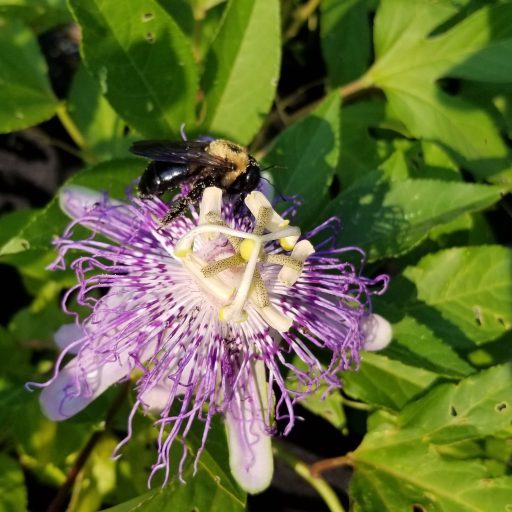When I first got to the current garden I manage, I was an early “permie” (like a trekkie to Star Trek so is a permie to permaculture) and wanted to build a food forest — fast. I planted lots of things in a mad rush with the constant mantra in my mind that the best time to plant a fruit tree is 10 years ago. I planted: feijoa, comfrey, Lycium, yellowhorn, female grafted ginkgo, figs, pomegranates, persimmon, persian mulberry, Ceanothus, Passiflora, Arbutus, Jujube, and Elaeagnus. 3 years later I have the result of my collaboration with this piece of land and the plants that I imported. (Even “native” plants are imported typically from somewhere — Although I did transplant nettles, willows, and several other species from the local wetshed.) Right now, I’m in an Elaeagnus shrubland. They made it. Many other things didn’t.
Most of the talk about this plant is fear of its invasiveness. Most of my YouTube comments have mentioned this as well. First of all, there is no such thing as “invasive”, per se. All plants and other creatures formerly came from somewhere. Dispersed by many natural agents such as the wind, floating seeds, birds, and people. Plants and animals move across the planet. They always have. Camels evolved in North America as did the precursor to the horse. How can gingko or horsetail been invasive when they were here before the dinosaurs? This argument goes very deep, and for more information I suggest going to David Theodoropoulos’s site. So without objective definitions of “invasive” or “native” what sense can we make of invasion biology?
Who benefits from poisioning the land with toxic pesticides (and their combinations), clearcutting, habitat destruction, and generally wreaking havoc on nature? Typically, herbicide companies such as Monsanto. However, don’t blame them exclusively, they are a mere product of the paradigm of civilization run completely off the cliff. (For more on this, read Ishmael).
So back to my feral garden that is an Elaeagnus shrubland. In my area they are not “invasive” because they need summer water to germinate and our summers or essentially water free. I couldn’t get any of the seed to germinate, even when given summer water. Also, this is not an abandoned land like most people conceive of wilderness to be. Everyone one of these berries will be devoured by a community of human foragers. I planted them in full awareness that they are not going to spread into the wildlands here. They are on the top “noxious” or “invasive species” lists in the Eastern U.S. They are said to displace native habitat and reduce biological diversity. This is an irrational conclusion based on questionable studies. Alpha and Omega diversity are increased by having Autumn olive in the East, and it’s a healer of soil, which has been extremely degraded there. The landscapes that the “native” plants there were accostomed to only a few hundred years ago are all but gone, and there is a catastrophically altered landscape in its place. If Autumn Olive thrives in this environment, why not let it?
If it’s a matter of preference or focused native restoration attempt, then use Autumn olive, don’t poison the entire watershed to kill like it’s bad or something. If you have Autumn olive in your area, eat it! It’s an amazing food source.
Based on my research into this subject, I do not subscribe to the construct of an invasive species. However, as an engaged land manager who is dealing with what is actually going on in the ecology I will say this: There is no such thing as an invasive species, but there is such a thing as an irresponsible planting.
